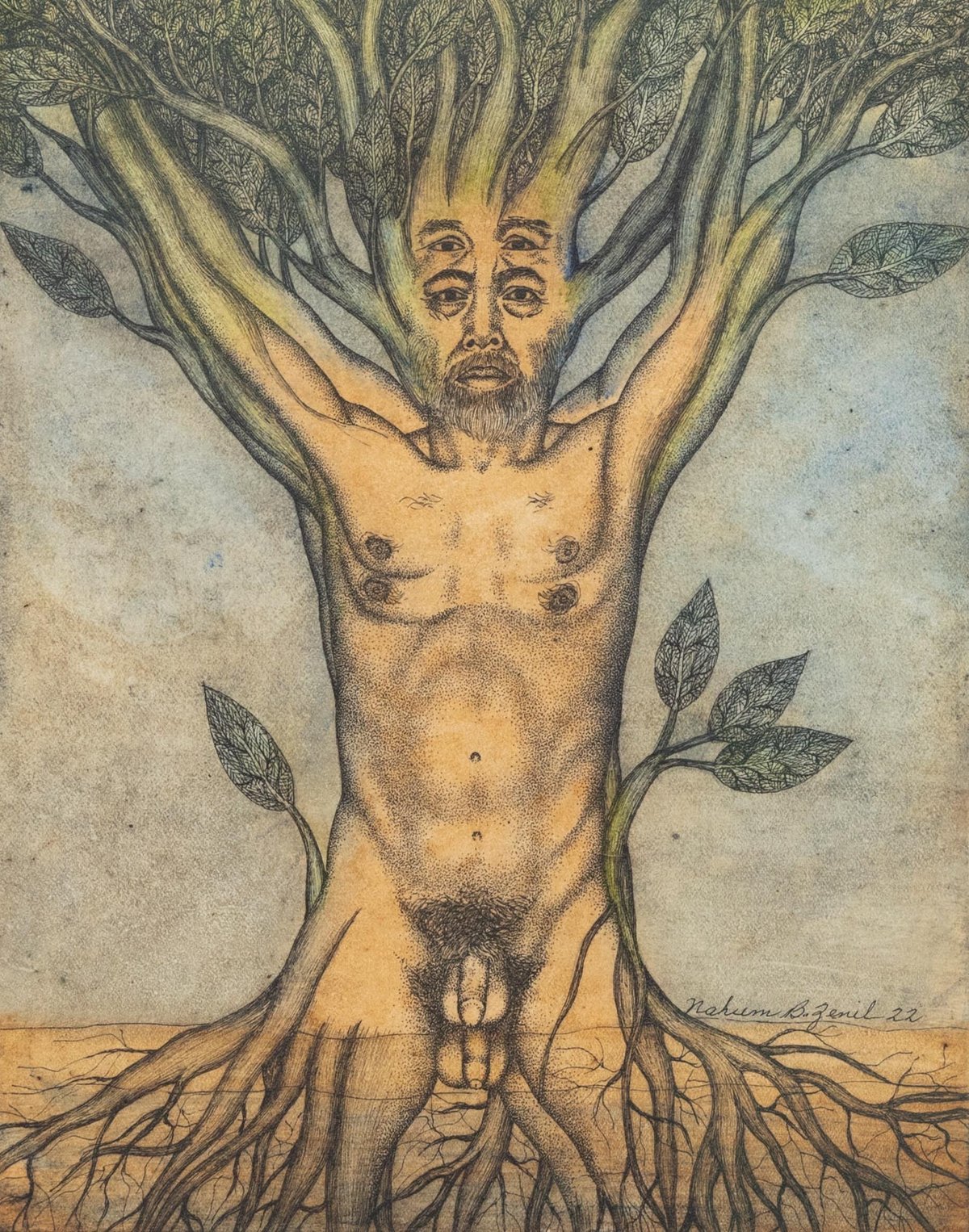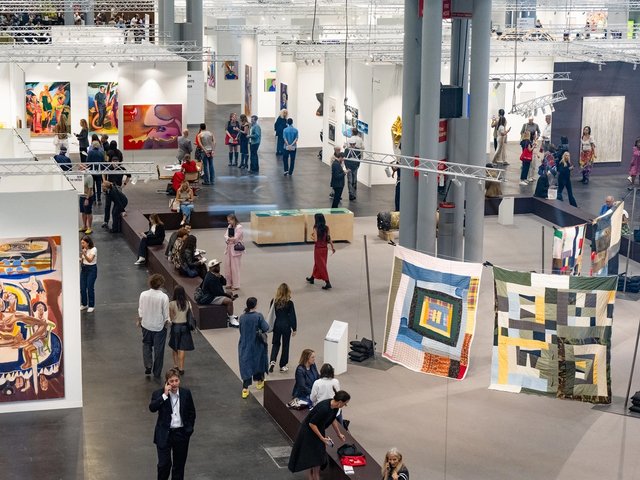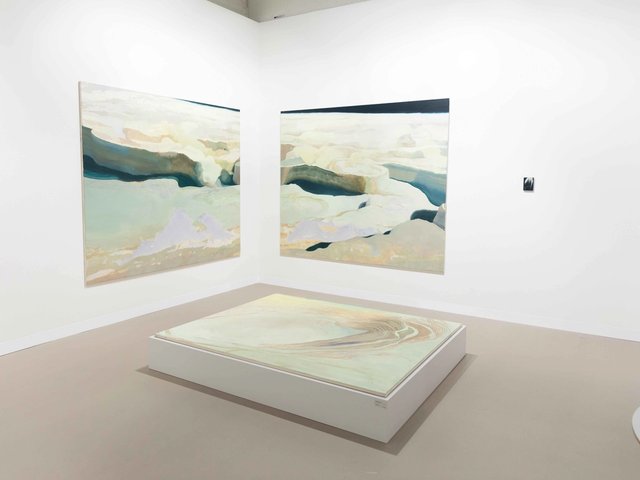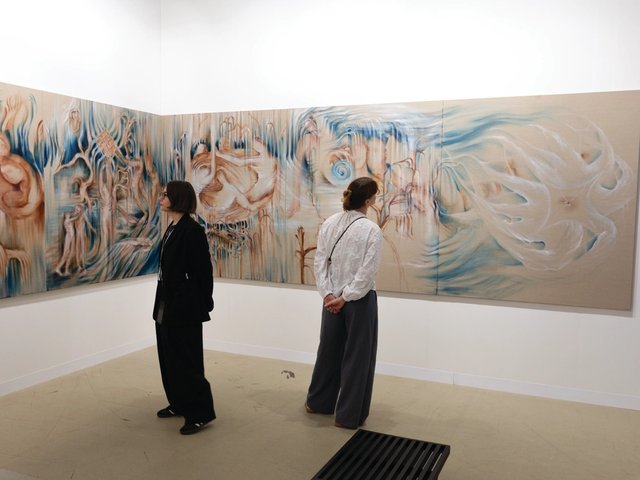This week Liste Art Fair Basel celebrates its 30th birthday, a very adult milestone for a fair that has always prioritised youth and encouraged exhibitors to display works by artists under the age of 40. But even going into its fourth decade, Liste stands manage to delight visitors with subversive art and buzzy international galleries.
Nahum B. Zenil
Being a Tree Sometimes III (2022, pictured above)
Parallel, Oaxaca
“Nahum B. Zenil, 78, is very well known in Mexico; he’s been close to the Neo-Mexicanism movement,” says the gallerist Oliver M. Kandt. “Being part of the gay community in Mexico since the 1990s, LGBT rights, being from a rural, Indigenous background—all this mingles [in his work]. This is a portrait of him and his husband.”

Magdalena Petroni, Silver Cobra (2025) and Blue Cobra (2025) Photo: David Owens
Magdalena Petroni
Silver Cobra (2025) and Blue Cobra (2025)
General Expenses, Mexico City
The taxidermied rats take some visitors by surprise at General Expenses’s stand. “It’s divisive,” says sales director Ricardo Diaque. “People who like it love it. Others are quite disturbed and won’t even walk in.” Magdalena Petroni’s work explores the divide between synthetic and organic in a playful way; the rats crawling in and out of twisted chrome and motorcycle mufflers evoke a sense of a post-apocalyptic world.
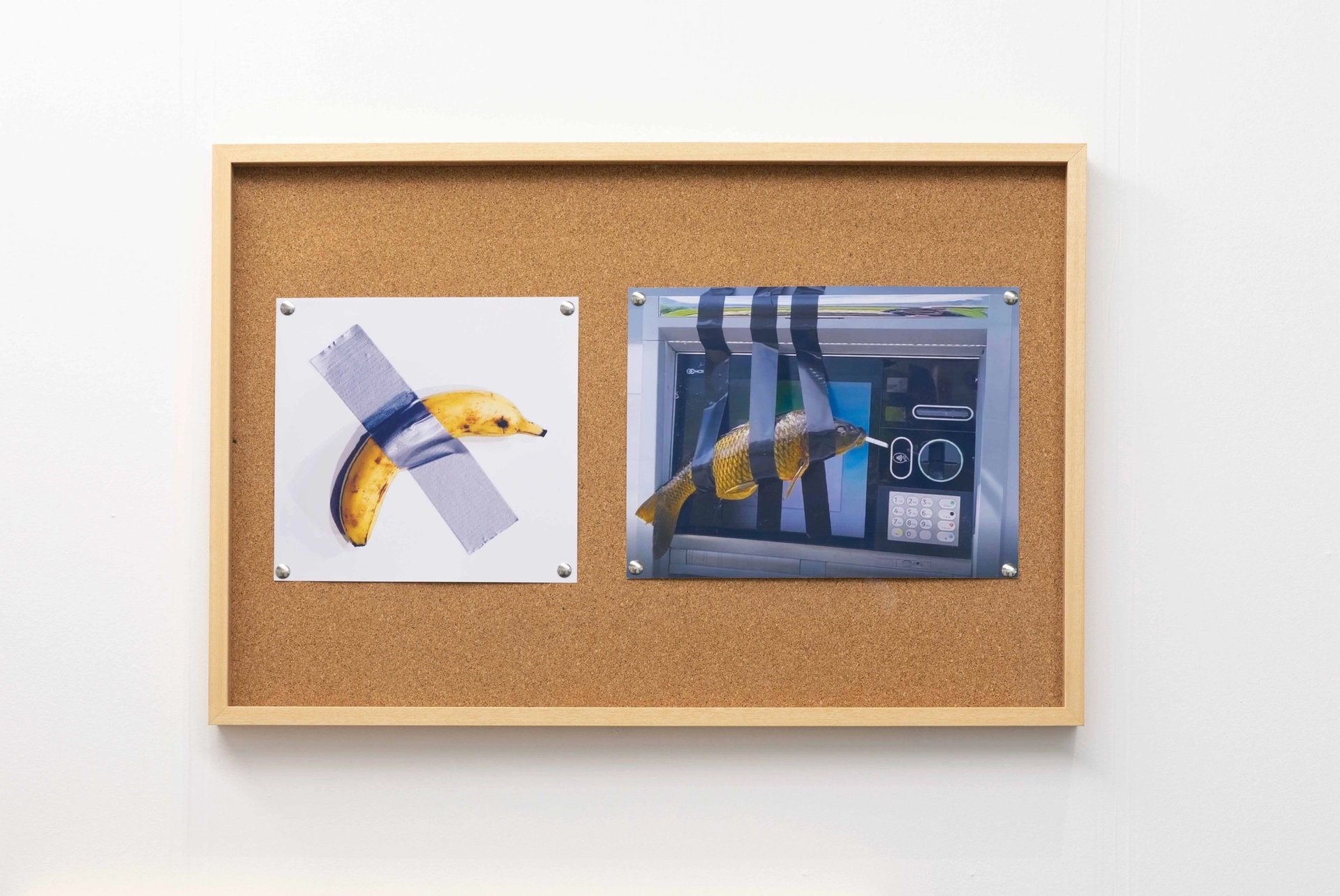
Al Freeman, Cattelan/fish (2025) Photo: David Owens
Al Freeman
Cattelan/fish (2025)
56 Henry, New York
Al Freeman’s Comparisons series juxtaposes masterpieces from the traditional art canon with images she finds in the “deep waters of the internet”, says the 56 Henry gallery director Era Myrtezaj. The prints, pushpinned side-by-side into corkboard, echo one another: a picture of a Maurizio Cattelan-esque banana taped to a wall is paired with an image of a fish smoking a cigarette taped to a microwave.
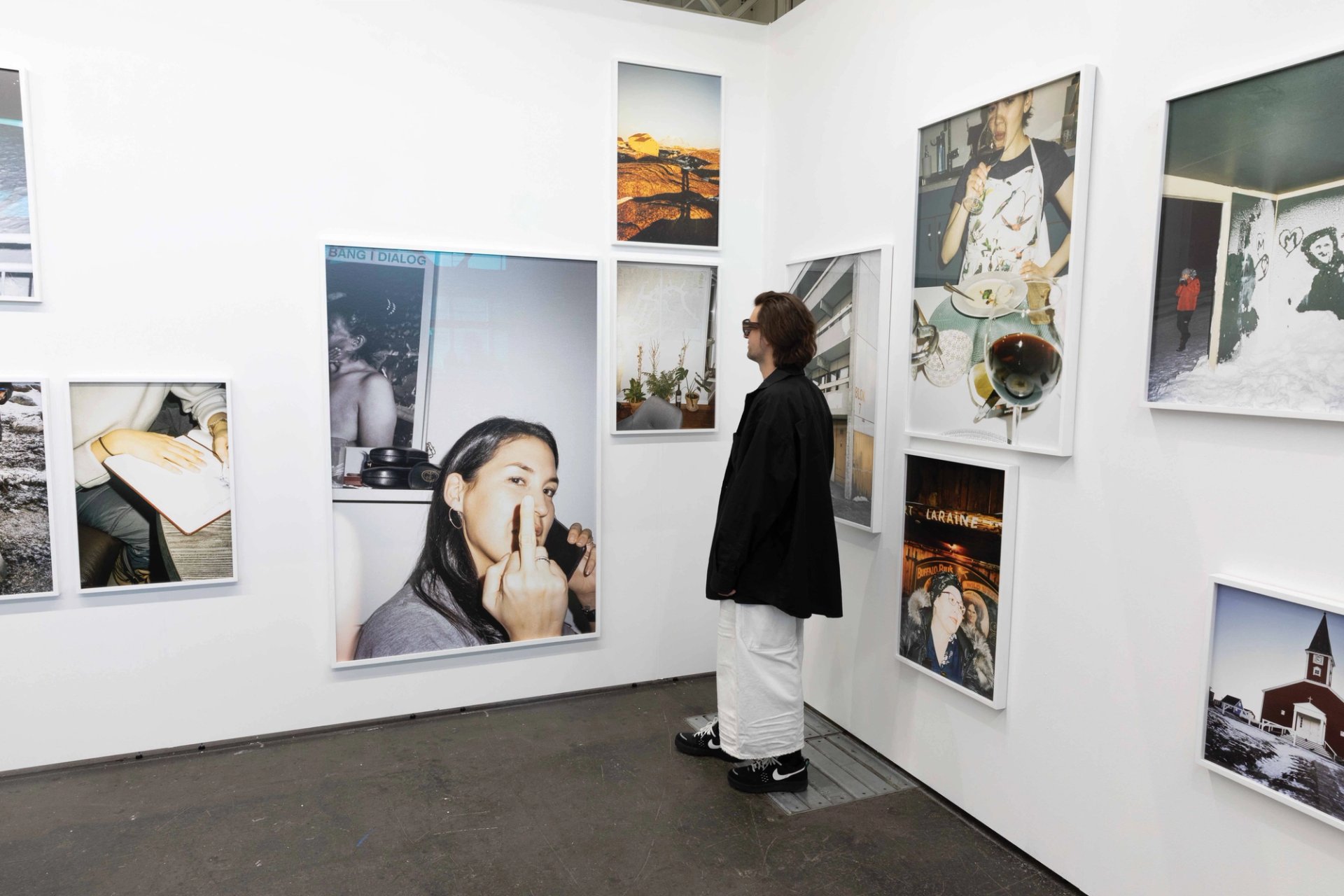
Inuuteq Storch, What if You Were My Sabine? (2018-25) Photo: David Owens
Inuuteq Storch
What if You Were My Sabine? (2018-25)
Wilson Saplana Gallery, Copenhagen
“This new series by the Greenlandic Inuit artist Inuuteq Storch is a love story and an homage to his country, in which he’s taking Greenland back from the Danish view that has defined its culture,” says gallery owner Christina Wilson. “Nature in Greenland is incredibly big and overwhelming, and man is really small within it. [In the top image] you can see Storch’s shadow is just reaching out over the cliffs. He likes to be in the landscape, and he’s stating that he’s always there in everything that he does.”

Javier Barrios, Welcome to the House of the Lord and the Madness (2025) Photo: David Owens
Javier Barrios
Welcome to the House of the Lord and the Madness (2025)
Lodovico Corsini, Brussels
The Mexican artist Javier Barrios is fascinated by the history of orchids. They were extracted from the Amazon in the 19th century and exported to Europe; the trade was accelerated by the invention of Wardian cases, an early version of the modern terrarium. Barrios fixated on the thought of orchids transcending captivity and taking their revenge on humanity, and constructed his own version of a Wardian case, the sides of which depict the flowers morphing into demonic underwater figures. “Orchids were seen as fragile species that needed to be saved from their environment,” gallery founder and director Lodovico Corsini says. “This gives them authority and agency.”

Jonathan Sanchez Noa, Untitled (Zarabanda) (2025) Photo: David Owens
Jonathan Sanchez Noa
Untitled (Zarabanda) (2025)
Voloshyn Gallery, Kyiv and Miami
“I was born in Havana, Cuba, and I’m based in New York,” says the artist Jonathan Sanchez Noa. “This installation project, created for this booth, was made with a technique that I’ve been developing for a long time involving natural fibres, which I source from Africa and Latin America. I practise a religion called Palo Monte; that’s the main influence in this work, but I also creolised it with other practices. There are crosses and vessels with coded language inside them—a way of me conveying syncretism between different forms of knowledge.”

Mikołaj Sobotka and Wiktoria Kieniksman, Random Chick (2025) Photo: David Owens
Mikołaj Sobotka and Wiktoria Kieniksman
Random Chick (2025)
Turnus, Warsaw
“We are a super-young gallery from Warsaw,” says Turnus’s Marcelina Gorczyńska. “We built a scenography in which the works respond to memories we want to forget. In the central painting, Wiktoria has painted an idealised woman; she’s lost in the city and somebody is trying to get her purse. We like her paintings very much because we believe that they come from a woman for women. The two artists collaborated closely: Mikołaj created a life-like lantern, and Wiktoria paints the light from it here.”


